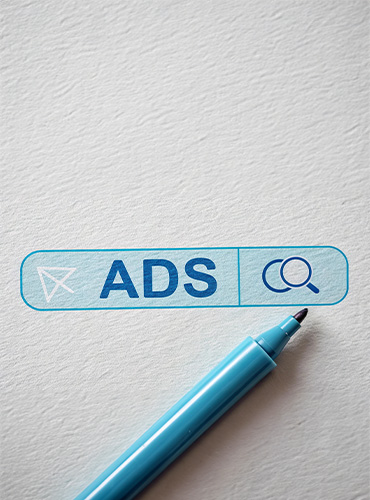
What separates successful marketing from guesswork? The answer lies in truly understanding your customers. Buyer personas deliver the key to higher conversion rates and marketing that actually works. The numbers speak for themselves: marketers who use buyer personas enjoy 73% higher conversions than those who don’t. Even better, 24% of companies generated more leads while 36% created shorter sales cycles by implementing buyer personas.
Here’s what catches our attention: 86% of business buyers say they’re more likely to purchase when their goals are understood, yet 59% of reps don’t take the time to understand these goals. This gap represents a massive opportunity for businesses ready to invest in buyer persona development.
A buyer persona creates a semi-fictional representation of your ideal customer that helps you tailor your messaging, products, and services effectively. The best part? Creating a buyer persona doesn’t require weeks of research or complicated processes. Smart businesses typically create multiple buyer personas to target different segments of their audience.
We’ll guide you through creating a powerful buyer persona in just 30 minutes. This process gives your team deeper customer understanding, sharper focus, smoother customer journeys, and ultimately higher ROI and conversion rates. Let’s make something great together!
What is a Buyer Persona and Why It Matters
A buyer persona serves as your marketing compass. These semi-fictional representations help you understand your customers at a personal level through strategic research and data analysis.
Definition of a buyer persona
A buyer persona represents your ideal customer based on market research and insights from your existing customer base. Unlike basic demographic information, buyer personas capture the complete picture—including attitudes, concerns, behaviors, and decision criteria that drive prospective customers to choose your solution. These detailed profiles help you understand not just who your customers are, but how they think and make decisions.
Buyer personas synthesize audience data to create fictional yet realistic representations of key audience segments with particular interest in your business. Most companies develop multiple personas to effectively target different audience segments.
Buyer persona vs. customer profile
Many businesses confuse buyer personas with customer profiles, but they serve distinct purposes. An ideal customer profile (ICP) provides a broad overview of target segments for the entire business, primarily focusing on organizations that match your solution.
Buyer personas add depth by focusing on individual decision-makers within those organizations. They go beyond surface-level information to capture personal backgrounds, challenges, motivations, and communication preferences. The ICP identifies who to target, while buyer personas outline how to communicate with individuals effectively.
Why buyer personas are essential for marketing and sales
The data supports the importance of buyer personas. Companies that exceed revenue goals are 71% more likely to have documented buyer personas. We’ve seen how marketers using buyer personas achieve significant results.
Buyer personas deliver strategic advantages:
- Improved targeting - Adjust content to strategically target interested consumers
- Personalized marketing - Create more relevant content that resonates with specific audiences
- Better lead qualification - Identify and prioritize valuable opportunities
- Enhanced customer experience - Tailor interactions to meet specific expectations
Through persona development, you’ll understand individual customer needs and address marketplace problems more effectively. This human-centered approach leads to higher engagement, improved conversion rates, and stronger customer relationships.
How to Create a Buyer Persona in 30 Minutes

Ready to build a persona that actually drives results? You don’t need weeks of research or complicated processes. With the right approach, half an hour gives you everything needed to create a persona that changes how your team connects with customers.
1. Gather data from your CRM and analytics
Start with what you already have. CRM systems collect valuable information from multiple touchpoints, showing patterns in customer behavior and preferences. Your website analytics reveal visitor demographics, content engagement, and buying patterns. Social media platforms add another layer of audience insights. This foundation ensures your personas reflect real customer actions, not guesswork.
2. Conduct quick customer interviews or surveys
Data tells you what happened. Conversations tell you why it happened. Even three to five solid interviews can reveal meaningful patterns. Focus on recent buyers who made purchasing decisions in the last 3-6 months—they provide the most accurate insights. Keep interviews relaxed yet focused: personal background, company context, daily challenges, and their buying journey. These conversations turn numbers into stories your team can actually use.
3. Identify key demographics and psychographics
Build the basic profile first. Compile essential demographic information including age, gender, location, income, education, and job title. Then dig deeper into psychographic elements like personality traits, interests, values, and lifestyle choices. These details help your team see real people behind the data.
4. Define goals, challenges, and buying behavior
What drives your customers? Understanding their motivations makes your messaging hit harder. Document their professional objectives, daily challenges, and decision-making processes. Capture the specific questions they asked during their buying journey and what convinced them to purchase. These insights become your most powerful marketing tools.
5. Use a buyer persona template to organize insights
Organization makes information usable. Effective templates include sections for persona name, demographics, defining traits, goals, frustrations, favorite brands, information needs, preferred channels, and key marketing messages. This structure makes your insights accessible across your entire team.
6. Name and visualize your persona
Make your persona feel real. Give them a name and visual representation that transforms abstract data into someone your team can understand and reference. Try names that reflect their role or key characteristic, such as “Marketing Manager Margie” or “IT Ian”. This step helps teams stay customer-focused in every decision.
Partner with us and watch how a well-crafted persona changes everything about your marketing approach.
Tips to Improve and Maintain Your Buyer Personas
Your personas need regular attention to stay effective. Here’s what works for keeping these valuable assets sharp and relevant over time.
Use AI tools to speed up persona creation
Modern AI tools have changed the game for persona development by analyzing massive datasets to identify patterns quickly. Several powerful options deserve your attention:
- Acknowledge the issue and express concern for those affected
- Provide accurate, transparent facts about the situation
- Take responsibility if appropriate
- Express empathy toward those impacted
We recommend this ChatGPT prompt for quick results: “Based on the following customer data [insert your data], create a detailed buyer persona including demographics, pain points, goals, preferred communication channels, and decision-making criteria”.
Update personas regularly with new data
Smart businesses schedule an annual review of their personas to stay aligned with evolving audience preferences. Customer behavior shifts constantly, so integrate fresh data from analytics tools, customer interviews, and social listening. Aligning personas with evolving business objectives often opens new opportunities that weren’t previously attainable.
Create negative personas to filter poor-fit leads
Negative personas help identify who you don’t want as customers. These profiles typically include:
- Customers too advanced for your product
- Prospects too expensive to acquire
- People engaging only for knowledge, not purchase
Negative personas help you allocate resources more effectively and boost your ROI by focusing on prospects that truly matter. Each business is different, so are the customers you want to avoid.
Real-World Example: How Duolingo Uses Buyer Personas
Duolingo stands as a masterclass in persona-based marketing. Their strategic approach to understanding and targeting specific user types has driven remarkable growth that every business can learn from.
Understanding Duolingo's audience segmentation
Smart segmentation starts with data, and Duolingo excels here. Their largest user groups fall between ages 18-34, with approximately 60% of U.S. learners under 30. The platform maintains an almost perfect gender balance with 51% female and 49% male users.
What sets them apart? They’ve developed distinct personas like “Casual Learner Carlos,” who prefers relaxed, gamified learning, and “Serious Student Sarah,” who aims for fluency through advanced exercises. Each business is different, so are the problems—Duolingo recognizes this and crafts solutions accordingly.
How personas influence their content and UX
These personas directly shape both product design and marketing strategy. For casual learners, Duolingo emphasizes gamification elements—points, rewards, badges, and streaks—keeping learning fun and accessible. For serious learners, they offer advanced features and detailed progress tracking.
Even their famous push notifications vary by persona type, with different tones of voice tailored to particular user segments. We base every decision on data analysis—and Duolingo proves this approach works.
Results and growth driven by persona-based strategy
The numbers demonstrate the power of persona-driven strategies:
- Reached 116.7 million monthly active users and 40.5 million daily active users by Q4 2024
- Achieved 51% year-over-year growth in daily engagement
- Grew paid subscribers by 43% to 9.5 million
- Generated 76% of total revenue from subscriptions
Most impressive? Approximately 80% of their growth comes from organic channels. This demonstrates how well their persona-driven strategy resonates with target audiences. Success hinges on understanding what works—and Duolingo’s results prove the value of strategic persona development.
Conclusion
Buyer personas serve as your marketing compass, guiding every decision toward better customer understanding and stronger results. We’ve shown you how these detailed customer representations go far beyond basic demographics to capture the attitudes, behaviors, and decision-making processes that drive real business growth.
The framework we’ve shared proves that effective persona development doesn’t require extensive resources or complicated processes. Our 30-minute approach helps you gather meaningful data, conduct focused interviews, identify key demographics, define goals and challenges, and organize everything into actionable templates. This systematic process delivers measurable results when executed with purpose.
Keep your personas dynamic and relevant. Modern AI tools like Delve AI and UXPressia help you analyze large datasets efficiently, while negative personas filter out poor-fit leads and improve your ROI. These strategies ensure your customer understanding evolves with your market.
Duolingo’s success story demonstrates the real-world impact of strategic persona development. Their targeted approach to different user segments has driven remarkable growth—116.7 million monthly active users and 51% year-over-year engagement increases. These results show how deep audience understanding transforms both marketing effectiveness and product development.
Each business is different, so are their customers. That’s why we recommend starting with one well-crafted persona and building from there. Whether you’re a small business or large enterprise, these customer insights enable you to create more relevant content, improve lead qualification, and enhance the overall customer experience.
What do you have in your mind? Start building your first buyer persona today and watch how it transforms your marketing approach. Partner with us and discover how strategic customer understanding drives sustainable business growth.




